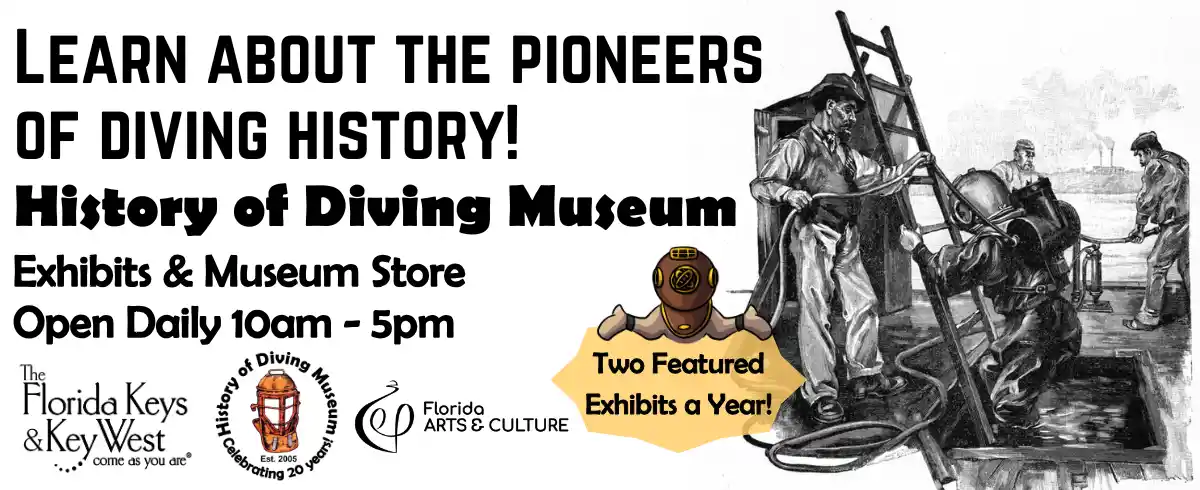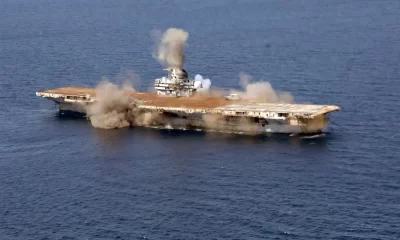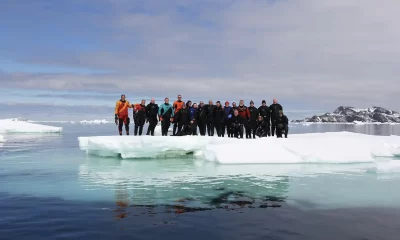Community
Assessing the Risks as a New Cave Diver
The spate of recent cave diving fatalities and near misses gave this new, 23-year old cave diver, Liam Mcllwain a profound reason to seek advice and to reevaluate his diving goals. Here are some of the conclusions he reached in light of the obvious risks of cave exploration.
By Liam Mcllwain. Photos courtesy of the author unless noted.

Most people wouldn’t know the unassuming drysuit repairman is a world-class cave diver, but that’s exactly what Ted McCoy is. With a dive count exceeding ten thousand, he is an active explorer with Karst Underwater Research who has conducted 13 body recoveries, and has teaching experience in several disciplines from cave diving to rebreathers. As a new cave diver, I was thrilled to have the chance to check out his shop. Behind a palm tree, Ted’s trusty white Ford Econoline Van sat parked in front of the shop and his grey-bearded black lab, Toby, sauntered out past it to greet us. Dry suits packed the shop, too many to count. Built from two-by-fours and plywood, his homemade workbench sat smack dab in the middle of the forest of dive gear.

Ted shuffled through a small pathway to greet us, and we followed him back through the maze of gear while we chatted about our morning dives at Cow Springs. Ted’s wife Crystal arrived a few minutes later with a McDonald’s bag in hand. She pulled a cheeseburger out and handed it to Toby who carried it into the yard, dropped it on the ground, and ate it, piece by piece. Leaning against the doorway, I absorbed each word of the cave-diving talk that ensued. I shifted my gaze to Toby, who settled himself calmly in the grass outside the garage, and then to Crystal flipping a drysuit inside-out in the sun.
Suddenly she looked down at her phone. “Oh shit,” she said, flatly. She pushed her way past us and into the garage, showing Ted the screen. He went silent. The energy in the room turned stale and we stood there for what seemed like an eternity. Ted dipped his head, bracing himself with one hand on his workbench. After a while, he looked up at us and said, “Brett Hemphill.”
Hemphill was the president of KUR and a pioneer in the mapping, exploration and documentation of some of the most legendary cave systems across the United States. Ted knew Brett personally and had assisted in KUR projects at places like Weeki Wachee and Lineater Spring. In Ted’s own words, “[Brett’s] contribution to cave diving was immense. But he was just such a good person…” Seeing Ted’s reaction to the news of his friend’s passing in a cave diving incident instantly brought back feelings inside me from months before, when another death in the cave diving community hit close to home.
Working at my local dive shop in Pennsylvania was a dream come true. The owners, Josh and Jenny, are both avid cave divers and quickly became my mentors in diving. Because of the regular conversations we had at the shop and the people they introduced me to, I began to realize just how interconnected the cave diving community is.

Dealing with Death
One day, the subject of conversation turned to a recent cave diving death. This tragedy affected me differently than previous stories I heard—I had briefly met the surviving member of the dive team at a local quarry, months before the incident. As cave divers, we recognize the inherent risks of what we do. But when someone you’ve met personally is involved in an accident, the consequences of diving at this level become much more real.
That fact, coupled with a new relationship that was beginning for me at the time led me to rethink my goals in diving. The future I continued to create with my girlfriend overshadowed my desire to push the limits of my training and continue advancing at such a fast pace. I realized that maybe I wasn’t as invincible as I had naively thought.
For the first time since I started diving, I felt unsettled—there was a Lake Erie wreck trip coming up and the feeling that something might go wrong weighed on my conscience. The morning of the trip, I pulled into work at the SCUBA shop with dive equipment carefully packed into the trunk. I planned to make the three-hour drive to Lake Erie after work and stay the night near the harbor. As I connected three whips from the fill panel to heavy twinsets and modulated the valve to allow air into the tanks, topping them up to the ideal mixture of nitrox for Lake Erie’s depth, the unsettling feeling persisted.
I tried my usual method for quelling anxious feelings. Inhaling deeply and filling my lungs then slowly exhaling and allowing the air to escape through my nostrils. As I did this, I assigned a number to each inhale and each exhale. No use. The churning sensation in my gut refused to leave.

Unsure what to do, I gave my dad a call. As we parsed through my feelings, we anchored onto the idea of trusting my gut. I decided to text my dive buddy and call off the dive. Thankfully, he was encouraging and supportive, saying the group would miss me on the trip but that I made the right call.
The next morning, bright and early, my phone pinged. “Trip’s blown,” the message said. The captain canceled the charter due to bad weather. I felt relieved but would shortly begin my search to understand these feelings. Months later, I called my cave instructor, Chris Brock, and told him what happened. “I fully believe that your gut call on not going on the [wreck] trip probably saved your life,” he said. “If your brain is telling you ‘don’t go,’ there’s a reason.”
Some time passed after the wreck trip, and as the trees reached their most vibrant hues and leaves began to fall, Josh and I headed down the highway. We left Pennsylvania behind—our sights set on the crystal clear springs of north Florida with mounds of cylinders and dive gear in the back of his pickup truck. During the 15-hour drive, we discussed our dive plan for the week. Because of some residual worries lingering after the wreck trip, I suggested that we keep the diving super chill, nothing too ambitious.
Excited to get my new side-mount setup dialed in, we did a shakedown dive at Little River on the first day. After two dives well within the bounds of my comfort zone, the feeling of familiarity rushed back. The following day at Ginnie Springs, we floated through the Devil’s System, and my apprehension continued to dissolve as we poked our heads in all the nooks and crannies at the front of the cave.
The third and final day of cave diving in Florida led us to the breathtaking Cow Springs. We were the only ones at Cow that morning. A local dog moseyed over as we suited up, clacking its claws on the wooden staircase. It sniffed our gear and took a quick drink from the shimmering spring. During the dives, I couldn’t help but think about how far I was from the exit. As beautiful as the cave was, I didn’t want to be entombed in it if something went wrong.
I tried to push the thought of what could potentially be the “last text” to my girlfriend out of my head and focused instead on the jagged, black goethite formations surrounding me. After another successful dive without incident—and my fear continuing to dissipate—Josh and I headed to Ted McCoy’s shop to get some drysuit repairs done. That’s when we all got the news about Brett Hemphill and I felt as though I was back to square one.

Diving Deeper Into My Concerns
After returning home from my trip to Florida, I got right back to my search for insight. I reached out to psychologist Eric Brymer, who works for Southern Cross University and the Manna Institute, an Australian regional university network researching mental health in rural areas. He focuses on research in the realm of nature-based activities and extreme adventure.
After sharing my story with Eric, he noted that to continue participating in extreme sports effectively, we need to have a deep understanding of three things. The first is the environment in which the activity takes place, the second is the activity itself and the third is a profound understanding of yourself. He cautions, “If you aren’t able to tune into these feelings… that’s when things go wrong.”
Speaking to Ted McCoy, I found that he also emphasized trusting your intuition. “Yeah, if my head’s not there, I don’t go on the dive. It is what it is,” he said. “There’s a level of butterflies you tolerate, and then you just kind of shake them off. Or you say ‘No, I’m not doing that.’” He also mentioned how having kids has made him more cautious with his diving. “There’s a responsibility to care for them. They’re relying on me.”
He told me of a big dive he’d been on where things began to go awry. When he decided to thumb the dive, younger dive partners questioned his decision, downplaying the problem. In response, Ted replied, “Yeah, but you know, that hole is gonna be there a hundred years from now. It’s gonna be here next week. We can come back.”
My instructor, Chris Brock, who is an accomplished cave and rebreather instructor teaching through the NSS-CDS, TDI, and IANTD, told me about a diving accident that nearly cost him his life. He explained the pressure he put on himself to do the dive and described to me the warning signs he should have taken seriously.

First off, he didn’t have the proper equipment for the dive with him that day, he said, “so I had to borrow equipment. There was a sense of uneasiness on my part. … I had a free-flowing regulator as soon as I went into the cave and I had to stop and fix that. I had trouble getting my oxygen bottle unclipped. It was wedged in between another bolt snap. I couldn’t get it off. So there was another sign right at the beginning of the dive.” Despite all these signs, Chris went ahead with the dive and ended up having a very scary close call involving a caustic cocktail in his rebreather. “I should not have done the dive,” he stressed. Note that according to a recent survey of caustic cocktail events in rebreather divers (Buzzacott, Dong, Brenner and Tillmans 2022-see below), 57% of respondents reported experiencing at least one caustic cocktail.
The accident left Chris with chemical burns to his esophagus and a reluctance to get back in the water. Following the incident, he had a major reevaluation of his diving. “I broke down in tears,” he said of a conversation with cave diving pioneer, Lamar Hires. “I’m scared to go back in there,” he admitted. Chris has since returned to cave diving and teaching but advocates for taking things slow, diving with people you deeply trust, and working your way back up to a comfortable level. “I was very slow about going back in … and it’s consequently made me more cautious even now.”
All in all, I realized that these feelings I was having were totally normal. Even the most seasoned divers have them, especially when experiencing a close call or losing a friend. Of the recent death of Brett Hemphill in Texas, Ted said, “Out of all of them, that one’s had the most effect on me.” He spoke highly of Brett, not only as a cave diving colleague but as a person and a friend. “The world is a dimmer place without Brett.”
Accepting The Risks
In sharing these stories, I hope that future divers will not only view technical and cave diving accidents as an opportunity for analysis but also as a cue to reevaluate their own diving goals and progression. For me, the cue led to a closer examination of my goals in diving and a substantial change. I no longer feel the urge to take that next class right away. I’m excited to build up my experience slowly, little by little, and view each new dive with a deep curiosity for what’s within my range rather than a sprint to the end of it.
Pushing the limits of exploration and diving technology is fascinating and acts as a driving force for us passionate tech divers. But in the end, no matter how prepared you are, there will always be risks. So to continue pushing, we’re going to need to normalize rethinking risk rather than simply judging those who are involved in accidents for what they did or did not do.
Eric Brymer makes the point that, in some cases, participating in extreme sports, like cave diving, “facilitates the capacity to talk about some of these things that you may not talk about in everyday life.” I would urge divers of all levels to have open and honest conversations with each other about accidents, close calls, and their goals moving forward.
DIVE DEEPER
PubMed: A survey of caustic cocktail events in rebreather divers (2022) by Peter Buzzacott, Grant Z Dong, Rhiannon J Brenner, Frauke Tillmans
InDEPTH: Examining Early Technical Diving Deaths: The aquaCORPS Incident Reports (1992-1996)
InDEPTH: Does The Sport Diving Community Learn from Accidents? By Gareth Lock
InDEPTH: Surviving an Uncontrolled Ascent by Maureen Roberts
InDEPTH: Close Calls: I Ripped My Drysuit a Kilometer Back In The Cave by Fan Ping
InDEPTH: Close Calls: Never Underestimate the Power of the Ocean By Jonathan Dekhtiar.

Liam McIlwain is a 23-year-old freelance writer and cave diver from Pittsburgh, Pennsylvania. In 2019, he participated in a travel gap-year program that took him around the world. As a member of the program’s media team, Liam documented many of the experiences on the trip, including his Open Water Scuba certification course in Costa Rica. Since then, he began working in the dive industry at his local dive shop, Scott’s Scuba Service, where he was certified as a PADI Divemaster and became an equipment technician for various manufacturers. Aside from diving, he enjoys camping, rock climbing, motocross, and other outdoor activities as well as photography, videography, and travel. He loves learning about how the world works and the interesting people who inhabit it.
























































